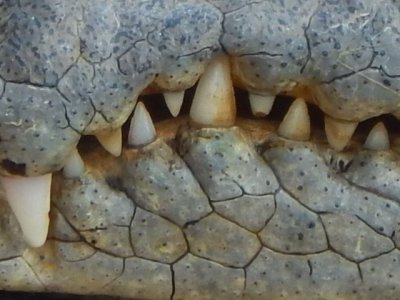Kristo Buase Monastery is a convenient staging point for travellers heading for Tamale and the North of Ghana and as a base from which to explore a number of local attractions:
TANO BOASE SACRED GROVE
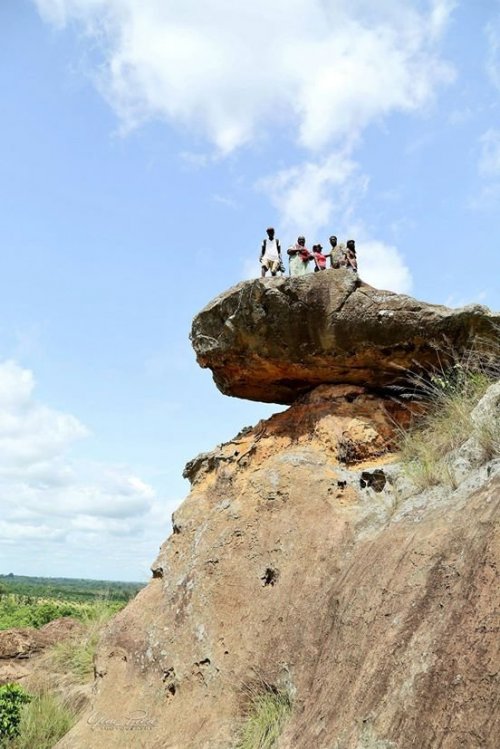
(3 km): an important religious site for African Traditional Religion (studied by the English anthropologist Captain R.S. Rattray in the 1920s and written up in his book “Ashanti”). Guided tours are available. Enquire at the Summer Hut at the junction of the Baafi road in Tanoboase village.
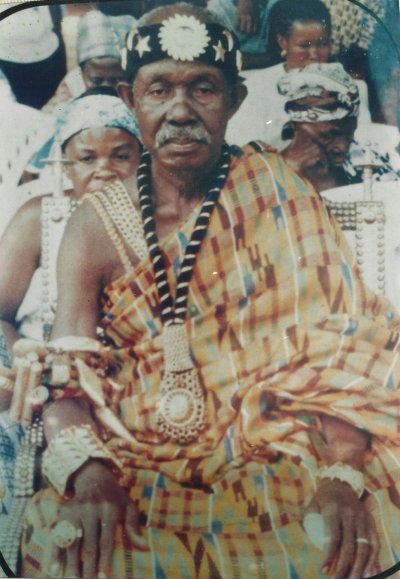
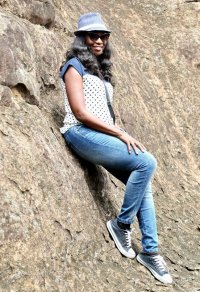
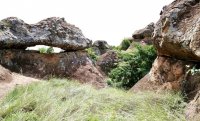
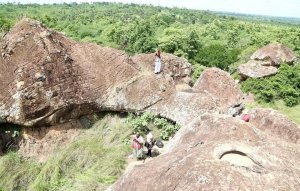
BONO MANSO
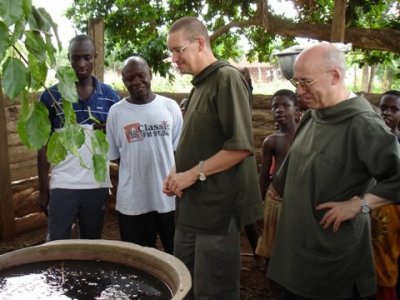
(8 km): the former capital of the Bono State and one of the earliest urban settlements in Ghana. It was abandoned after the Bono kingdom was defeated in war by Ashanti warriors in 1722-3. Part of the site was excavated in the 1970s. A satellite township of Moslem traders (Kramokrom) controlled trading networks between the forest zone of the interior and Djenne in the Middle Niger. Of special interest is a large medieval bronze basin traded across the Sahara from Egypt in the middle ages and now used for rain-making rituals. Guided tours of the site are available : ask at the Chief’s palace.
FULLER FALLS, KINTAMPO
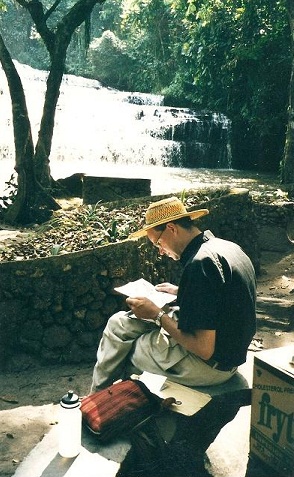
(60 km): one of the most relaxing sites in Ghana. It is a stepped waterfall with a basin just deep enough for swimming.
BAOBENG-FIEMA MONKEY SANCTUARY
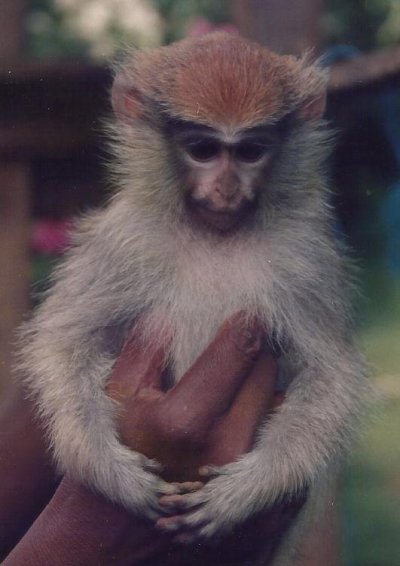
(70 km): colobus and mona monkeys in their natural habitat which have been protected from hunters by religious taboos. Also forest trails available with a knowledgeable guide.
Further Afield
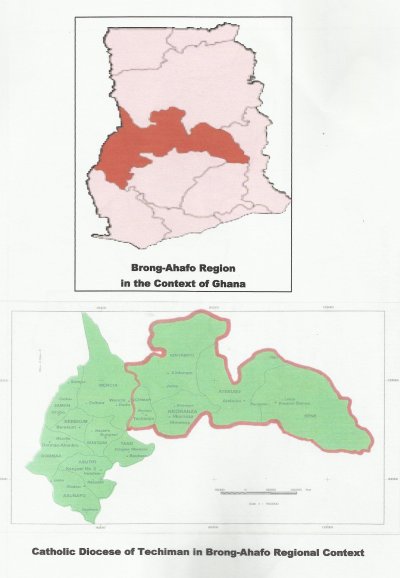
Techiman is a route hub with good communications by public transport.
Going NORTH will take you through Tanoboase (Sacred Grove and source of the River Tano, both important sites of the traditional religion) and Bono Manso to Kintampo, an important trading town from pre-colonial days with a strong moslem character. The Ashanti traders met their Hausa and Malian counterparts here at the edge of the forest. Soon after Kintampo the landscape changes to savannah and the plain of the Volta basin. Continue on to Buipe, the former capital of Gonjaland, and Tamale.
The road EAST takes you to Nkoranza, still a stronghold of the traditional religion. There is an old shrine in the rocks at Forikrom a few miles out of Techiman. Nkoranza has budget accommodation at a residential community for abandoned children with double handicap. Income from the guesthouse helps to support the work of the community, which is run by a Dutch couple with many volunteers. Look for the website of Operation Hand in Hand. The guesthouse is on the far side of the hospital compound.
From Nkoranza you can get transport to Ejura, a lovely setting in the Ashanti hills (Captain Rattray lived here at the time he was doing his anthropological studies for "Ashanti" in the 1920s), and on to the port of Yeji at the far north-east of the Techiman Diocese. From Yeji there is a vehicle and passenger ferry across the Volta Lake to Salaga in Northern district. An old slave-trading site. From Salaga you can loop back to Tamale, or on to Yendi, the former capital of the Dagomba Kingdom,
To the SOUTH EAST lies the road to Kumasi, the capital of Ashanti.
To the SOUTH WEST is the road to Sunyani, the regional capital of Brong Ahafo. A few miles out of Techiman you will find the Ghana Permaculture Centre with courses on sustainable agriculture, workshops, and a guesthouse with budget accommodation (see link to their website on the right of this page).
Finally, there is a road to the NORTH WEST which will take you first to Wenchi (home-town of Dr Busia, former President of Ghana - he is buried here in a mausoleum); from Wenchi you can choose to go west to the archaeological site of Begho (another mediaeval town site with important trading networks to the Sahel); then on to the border town of Sampa, which has a border crossing to Bondoukou in Cote d'Ivoire. Alternatively you can continue north to Banda Nkwanta, the most interesting of the ancient Sudanese mosques on this route, and Bui Dam. Bui is the new hydro-electric project recently completed by Chinese engineers. It has largely displaced the Bui National Park which used to be famous for hippos. Banda Nkwanta is also now notable as one of the centres of small-scale gold-mining - "galamsey". The black polythene sheds of the mine workers now line the road. At Bole you can branch to Damongo (budget accommodation at the Catholic Guest House)and the Mole Game Park at Larabanga (also accessible from the Tamale road). Straight on is Wa and the Upper West.
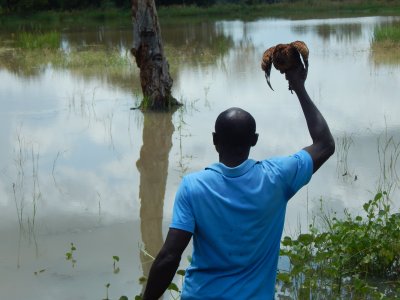
There is a Crocodile Pond in one of the last villages in Northern Region on the Wa road, just before crossing into Upper West. It is strangely atmospheric, and a very different experience from Paga. I've forgotten the name of the village, but you'll see the sign by the roadside. There are more than ninety crocodiles in the pond and they are believed to control the souls of the villagers.
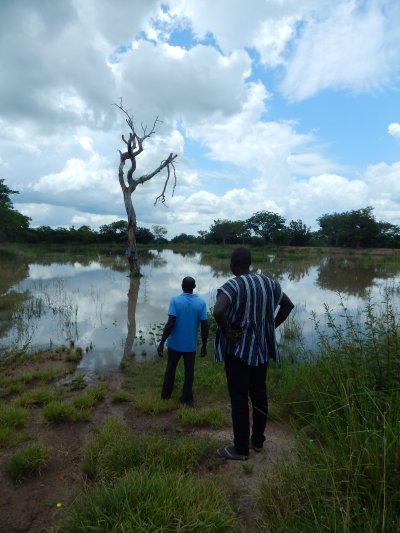
Not good news for chickens, though.
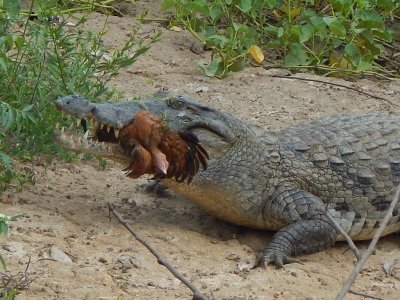
And perhaps it's best not to get too close ...
